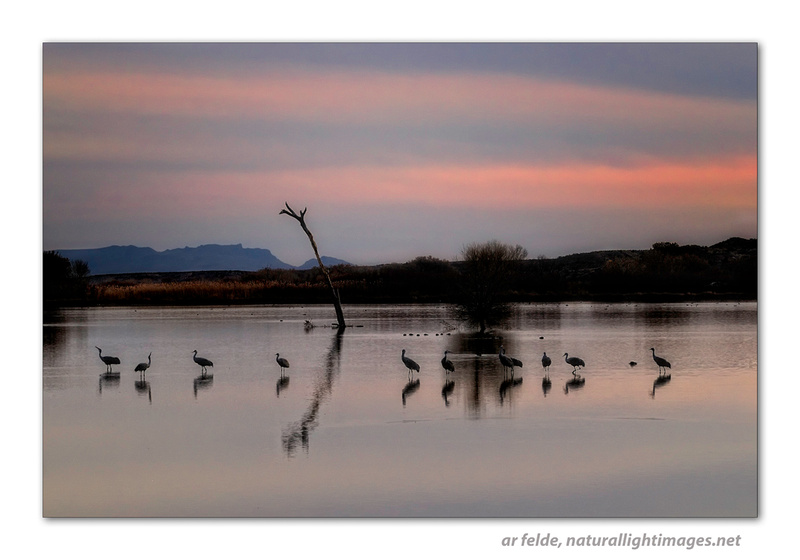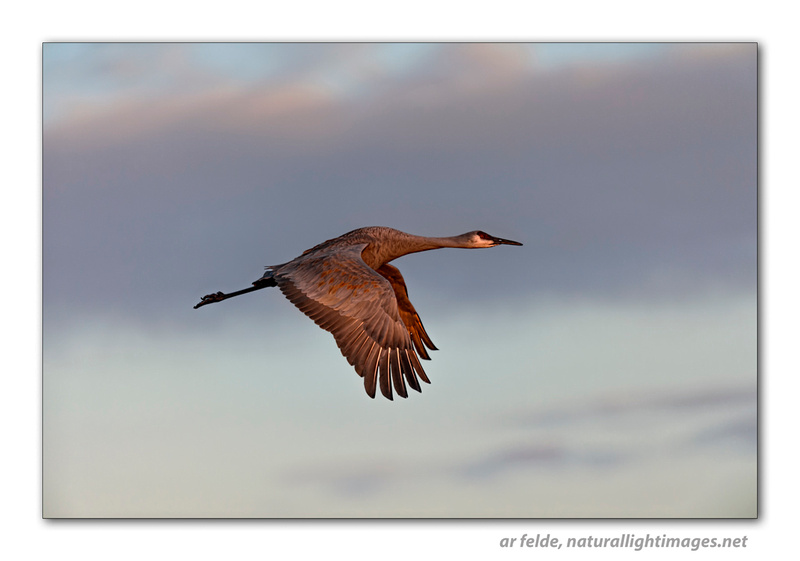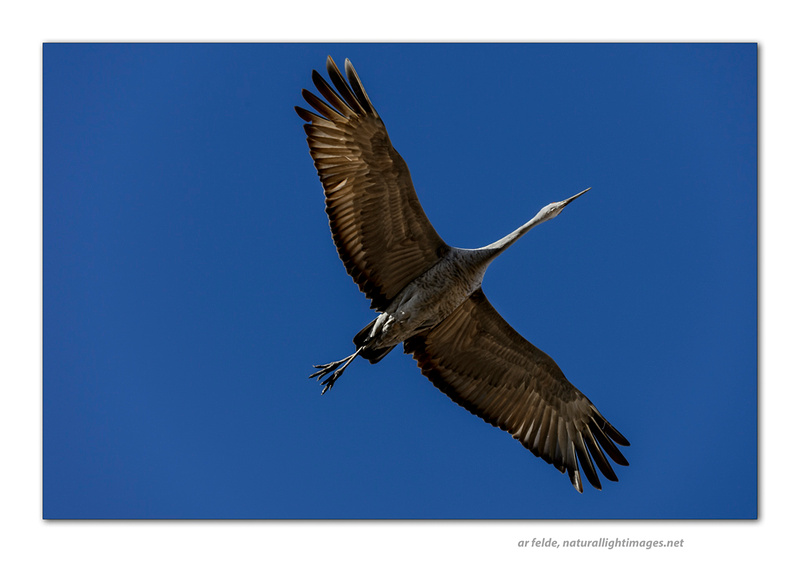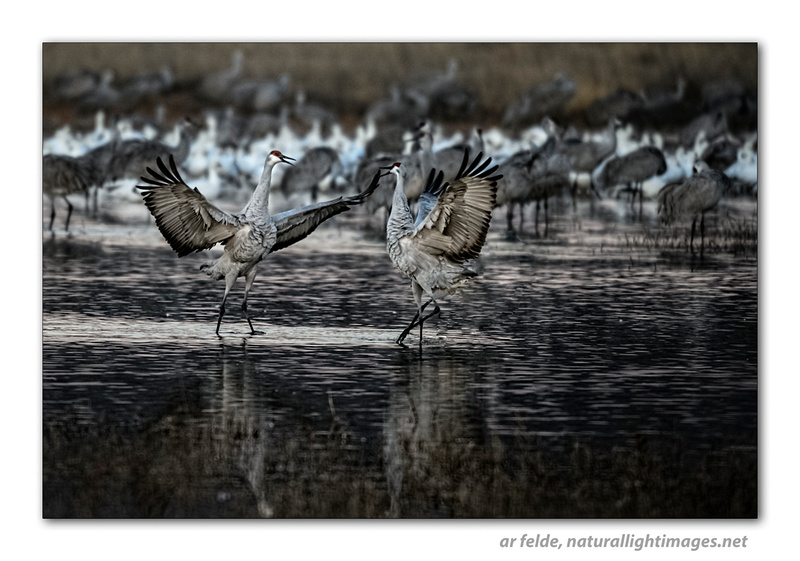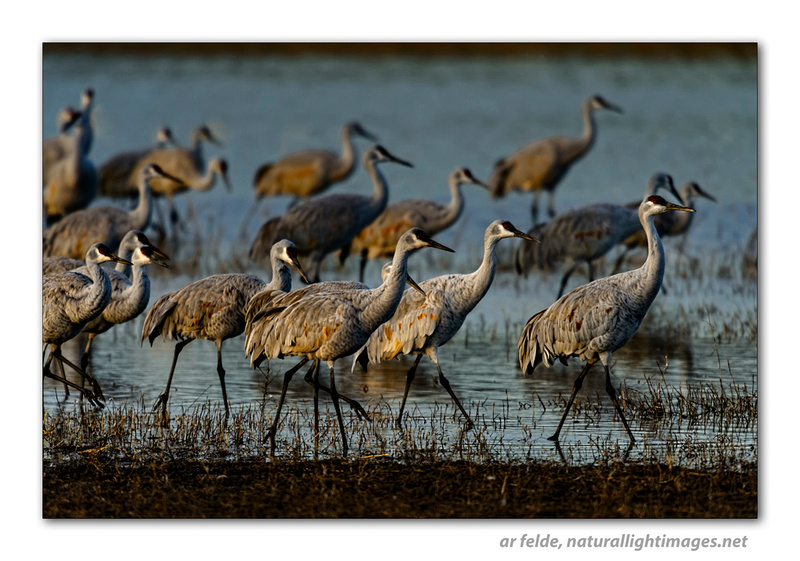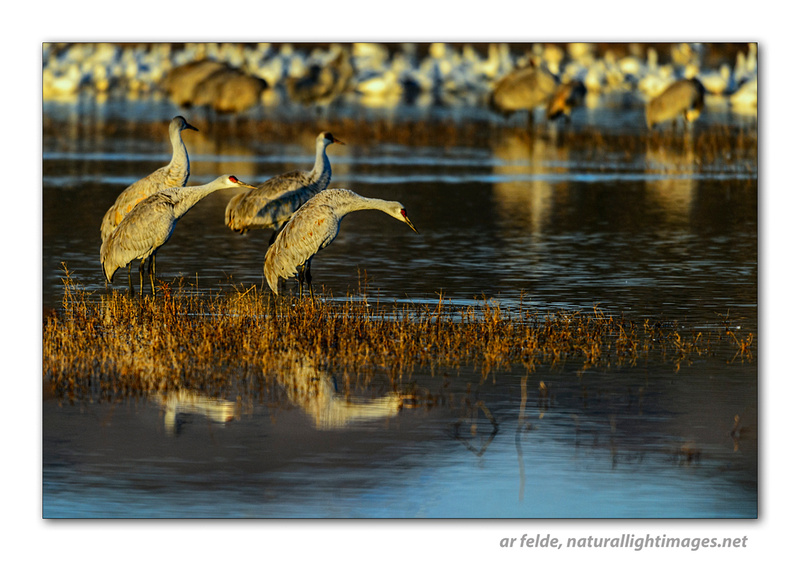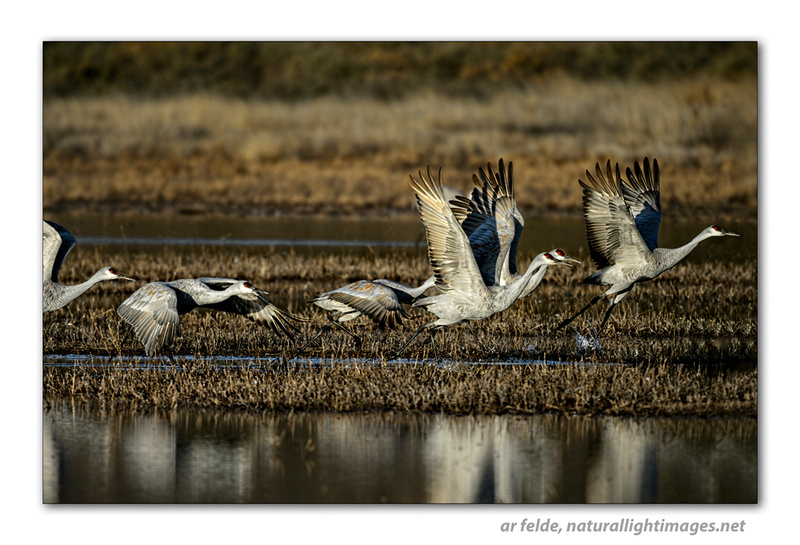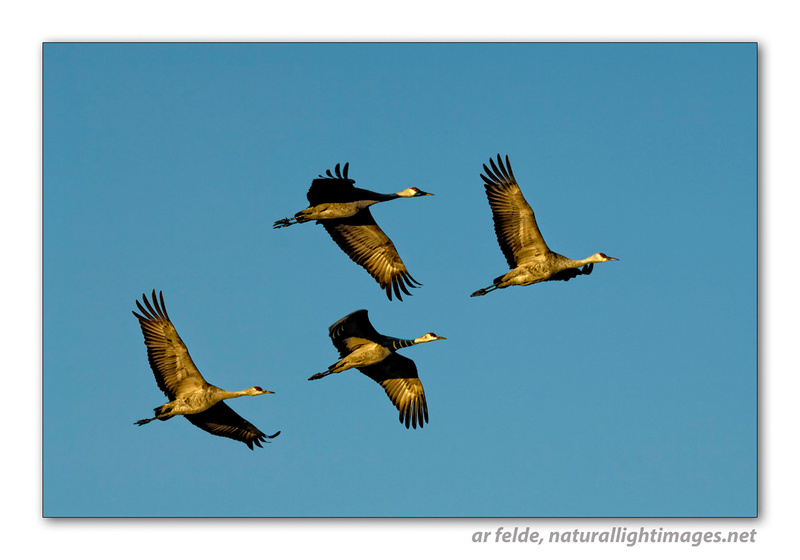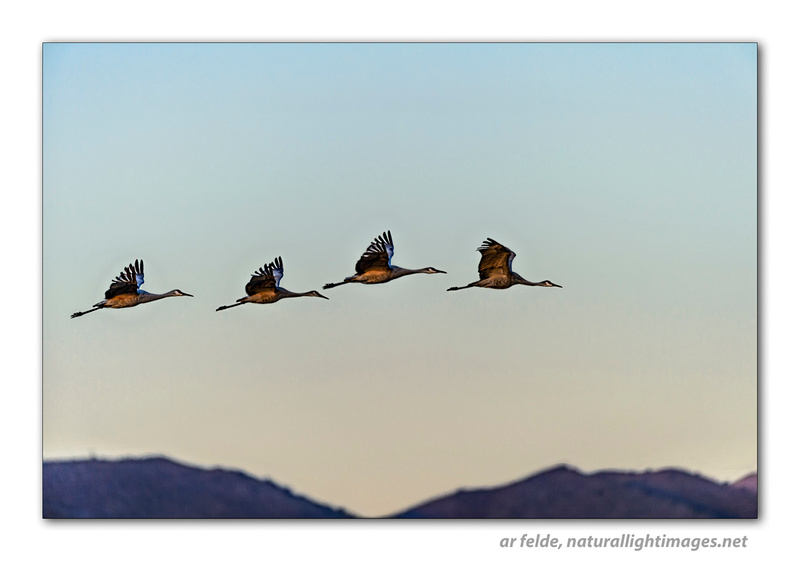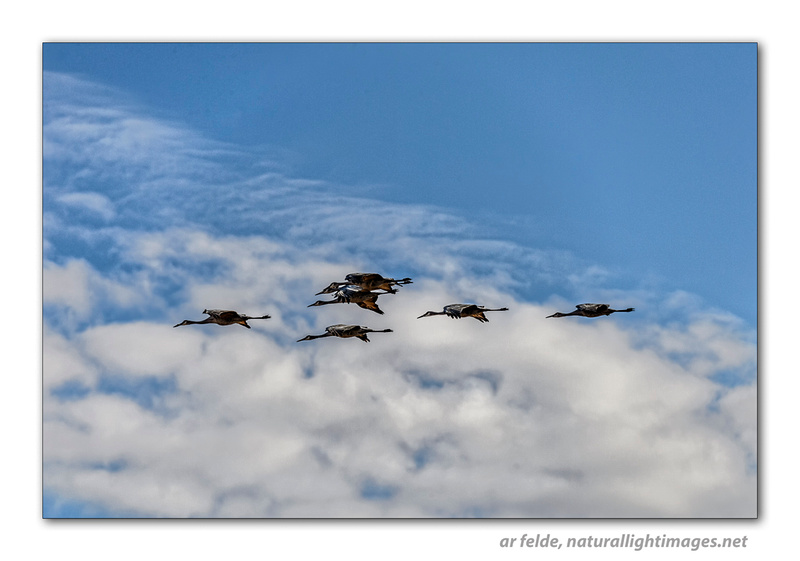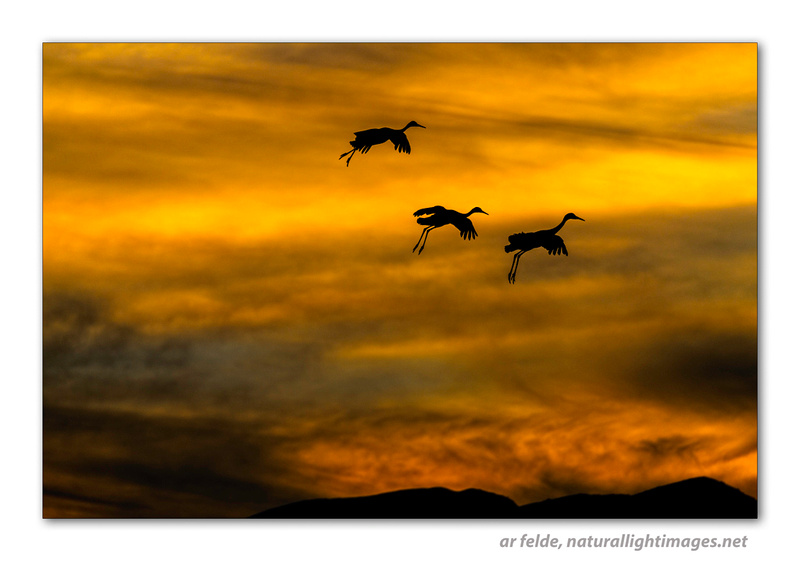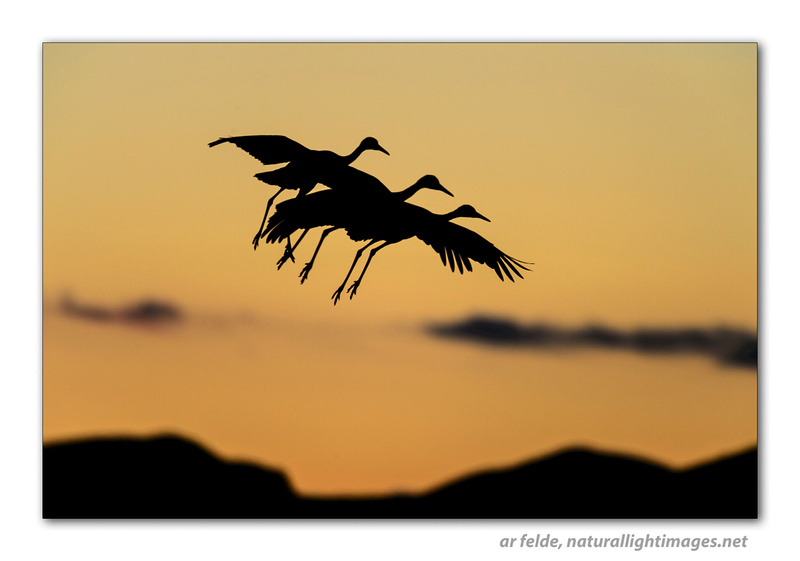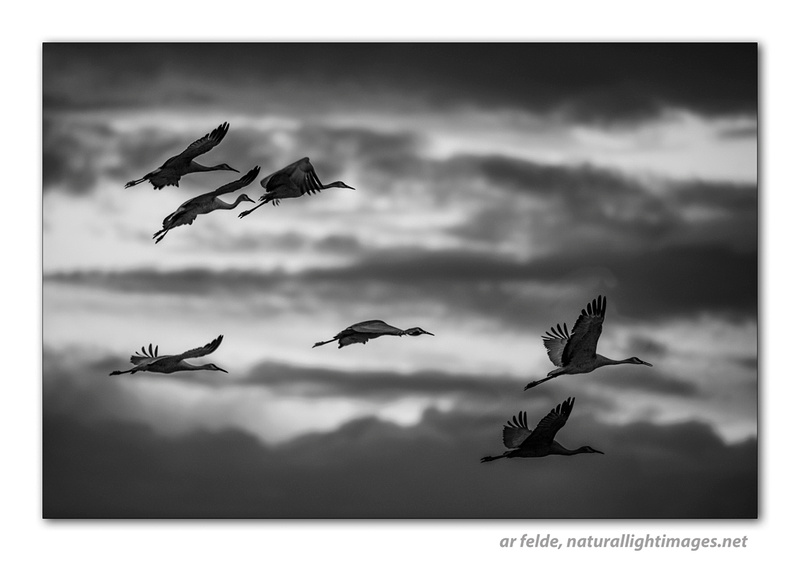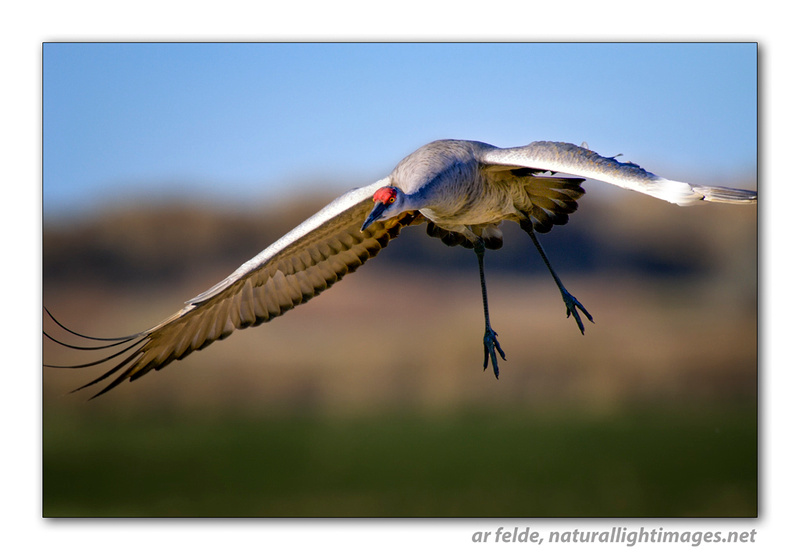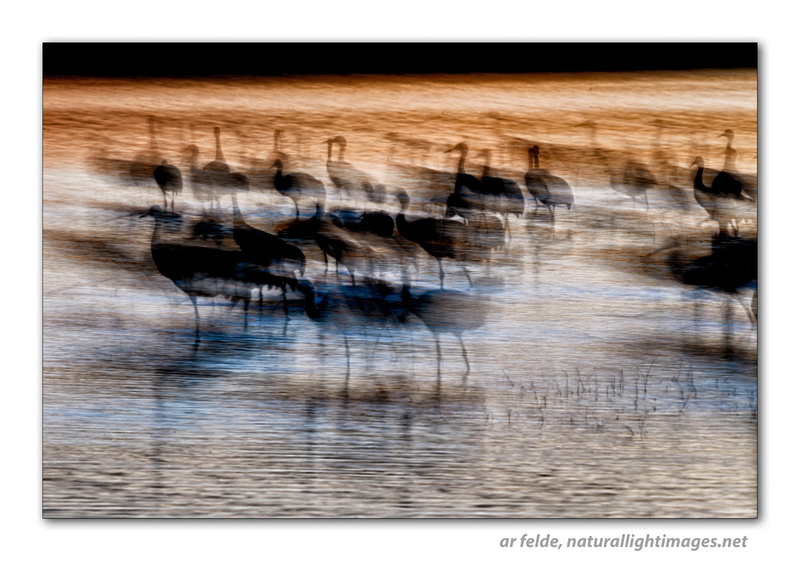Bosque del Apache Part IIThis is Part II of my posts on Bosque del Apache. It is a National Wildlife Refuge (https://www.fws.gov/refuges/) run by the Federal government located in New Mexico ... Oh God ... lets hope Trump doesn't find out about these ... he'll want to sell them! Part of the attraction of Bosque is the landscape; part is the attraction of thousands of geese; and lastly the thousands of Sandhill Cranes that winter there. They are the subject of this post.
I'll start with this image taken at sunset. It contains elements of a landscape enhanced by the cranes and their reflections. In fact, the reflections make this shot for me:
For the record, the Sandhill Crane is a large bird ... about 4 feet in length with a wing span over 6 feet. It is one of the species of birds that mates for life. Here's a shot of a single crane in flight:
And, here's one directly overhead showing that enormous wing span:
Every now and then, if you are lucky and quick, you'll catch two cranes in a dance ... Fun!
Cranes spend the night in a pool of water usually part of a large group. The water is used for defensive element against predators ... entering the water to attack makes noise, and slows the predator. Additionally, I'm told they post sentries to alert the flock should a predator enter the water. In the morning, family groups fly off to feed. They usually start out with a slow walk staring intensely in the intended takeoff direction. It's almost like watching a fleet of jet liners at LAX as they line up on the taxiway moving slowly as one by one they get cleared for takeoff!
And, this posture means they are at the head of the line. And they'll soon start a run for the takeoff. Like all good fliers, they takeoff into the wind!
And, here goes a group of 6. Up, up, and away!
A quartet climbing out!
Straight as an arrow:
Another group going the other way:
At Sunset, after feeding in the fields all day, the Cranes return to the water for their evening stay. They use those very large wings to go from a horizontal flight to vertical ... just extend the wings and shift the center of gravity to the back for a vertical descent. It is called parachuting!
More of same:
For the black and white fans, a B&W example:
Near the ground, they move back to a horizontal position, extend the legs, and glide in for the landing:
One evening I decided to be "artsy" and used a very slow shutter causing movement by the cranes in the water to be captured as a blur:
Next to the pond runs a Burlington Northern/Santa Fe rail line. I couldn't resist this abstract using that slow shutter speed:
This concludes my retro look back at a little-known unique place that I love to photograph. We are blessed in the USA to have a stunningly diverse natural habitat. The government's wildlife refuge program is one way to try and keep it from disappearing. And, as always, thanks for taking the time to look through my viewfinder with me. I hope you enjoyed it.
Adam
Comments
No comments posted.
Loading...
|
Subscribe
RSS
Keywords
Archive
January
February
March
April
May
June
July
August
September
October
November
December
|

